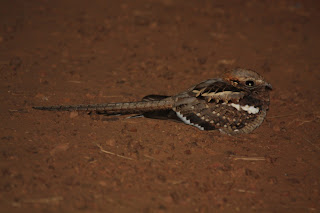It’s definitely beginning to look like the best system for a day’s tracking is to invest as much time as can be allowed to actually find each bird and get a waypoint for its location, and record some detail of behaviour, habitat, and tree species, and any association with other birds. Having said that, still not actually seen bird 1 yet – but we’re getting close!
Aside from tracking today, we have a meeting with the owner of some wholly decent accommodation on the edge of town. Essentially a holiday home/ weekend retreat for himself, he has built some chalets nearby and rents these out to local professionals. He says that sadly there is no free chalet at present, but explains that for our last two weeks we can move into 3 rooms in his own house! Deal done!!
Aside from tracking today, we have a meeting with the owner of some wholly decent accommodation on the edge of town. Essentially a holiday home/ weekend retreat for himself, he has built some chalets nearby and rents these out to local professionals. He says that sadly there is no free chalet at present, but explains that for our last two weeks we can move into 3 rooms in his own house! Deal done!!

The grounds of our prospective new accomodation
On our way back from fieldwork this evening we were treated to some pretty good views of long-tailed nightjars resting on the track ahead of us. This meant that poor Japheth had to wait a short while in town for us to pick him up. Sorry Japheth!
Above photo: long-tailed nightjar
The nightingale tracking continues anabated. The team now have a full complement of 10 radio-tagged birds, which has become quite a handful to track twice and even three times a day! Bee and Chas have also undertaken some more habitat mapping of the site, and during the course of fieldwork came across this rather confiding African crake:








No comments:
Post a Comment
Note: only a member of this blog may post a comment.